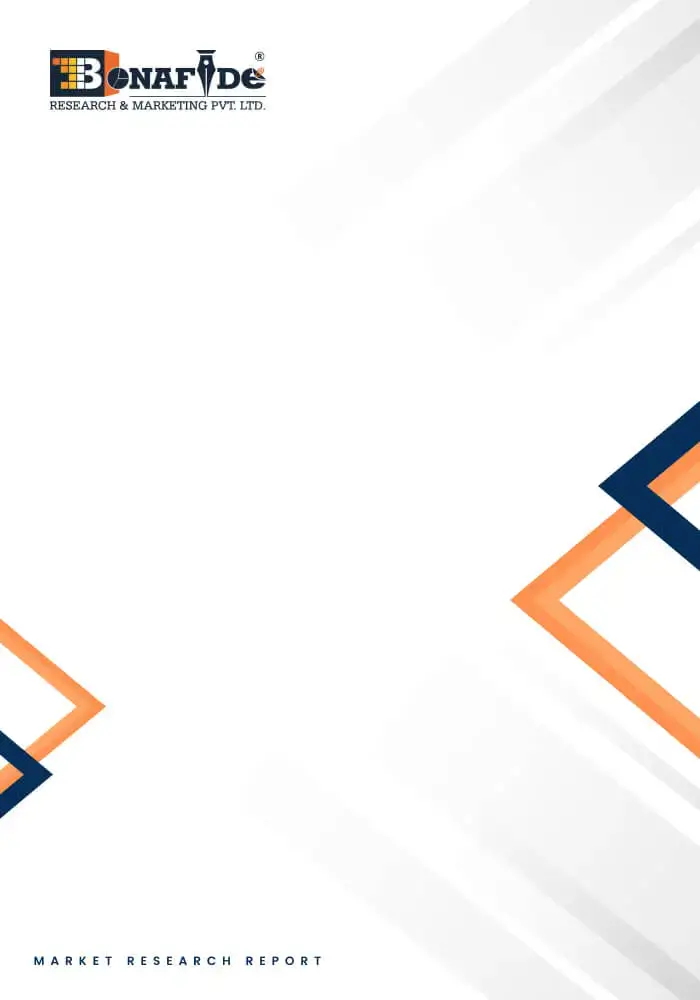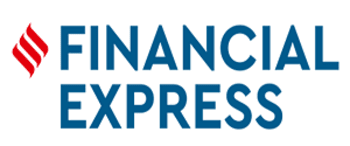The United States has a significantly larger population compared to other countries in North America. A larger population often translates to a larger market for consumer electronics and health-related devices, including heart rate monitors. The United States has one of the largest and most robust economies globally. The country's economic strength contributes to higher consumer spending on fitness and health-related products, including heart rate monitors. The U.S. is a hub for technological innovation, and many leading tech companies, including those specializing in wearables and health tech, are based in the country. This fosters the development of cutting-edge heart rate monitoring technology. There is a high level of awareness among U.S. consumers regarding health and fitness. This awareness, coupled with a proactive approach to adopting new technologies, contributes to a strong market for heart rate monitors. The U.S. has a well-established health and fitness culture, with a significant portion of the population actively engaging in various forms of exercise. This drives demand for devices that monitor and track health metrics, such as heart rate monitors. U.S. consumers tend to allocate a significant portion of their budget to health and wellness products and services. This includes spending on fitness trackers, smartwatches, and other wearables with heart rate monitoring capabilities. U.S.-based companies, particularly in the tech and healthcare sectors, allocate significant resources to research and development. This commitment to innovation results in the continuous improvement of heart rate monitoring technology, giving U.S. products a competitive edge. Some U.S. health insurance providers have partnered with wearable device manufacturers to encourage policyholders to adopt a healthier lifestyle. This collaboration often involves discounts on wearable devices, including heart rate monitors, as well as potential premium reductions based on health data. According to the Centers for Disease Control and Prevention (CDC), approximately 16.3 million adults in the United States aged 20 and older have coronary heart disease (CHD), which is the most common type of heart disease. This means that approximately 7% of the adult population in the United States has CHD.
According to the research report "United States Heart Rate Monitor Market Overview, 2028," published by Bonafide Research, the United States Heart Rate Monitor market is expected to reach market size of more than USD 5 Billion by 2028. Increasing awareness about the importance of health and fitness has been a significant driver for the heart rate monitors market. Consumers are becoming more health-conscious and are seeking tools to monitor and manage their fitness levels. Many heart rate monitors have integrated with smartphones and other smart devices. This integration allows users to track and analyze their heart rate data through dedicated apps, providing a more comprehensive approach to health monitoring. Wearable devices, including smartwatches and fitness trackers, often include heart rate monitoring features. These devices have gained popularity for their multifunctionality, combining fitness tracking with other features such as notifications, sleep tracking, and more. Ongoing advancements in sensor technology have improved the accuracy and reliability of heart rate monitors. This includes optical sensors that can measure heart rate from the wrist, eliminating the need for chest straps. The rise of e-commerce platforms has significantly impacted the sales of heart rate monitors. Consumers prefer the convenience of online shopping, where they can compare products, read reviews, and make informed decisions. This trend has prompted manufacturers to strengthen their online presence and distribution channels. Heart rate monitors are not only used for fitness and general well-being but also play a crucial role in medical applications. Continuous monitoring of heart rate is vital for patients with certain medical conditions, and wearable heart rate monitors contribute to at-home health management. Heart rate monitors have become integral in the fitness and sports industry. Athletes and fitness enthusiasts use these devices to optimize training, monitor performance, and prevent overexertion. Partnerships between heart rate monitor manufacturers and sports teams or fitness programs have become common.
What's Inside a Bonafide Research`s industry report?
A Bonafide Research industry report provides in-depth market analysis, trends, competitive insights, and strategic recommendations to help businesses make informed decisions.
Download SampleThe market is spilt-up into Non-Wearable and Wearable. Among them Non-Wearable segment is expected to the highest market share. In the United States Heart Rate Monitors Market, the Wearable segment, encompassing Chest Straps, Wrist Straps, and Strapless devices, is anticipated to exhibit the highest Compound Annual Growth Rate (CAGR) during the forecast period. This trend can be attributed to several factors driving the popularity of wearable heart rate monitors. Wrist straps, known for their comfort and convenience, have become increasingly favored by consumers for continuous, day-long monitoring. The integration of heart rate monitoring into smartwatches and fitness trackers has further boosted the appeal of these wearables. Strapless devices, leveraging advancements in sensor technology, offer a non-intrusive solution for heart rate measurement without physical contact with the body. Additionally, technological improvements in optical sensors embedded in wrist straps contribute to enhanced accuracy. The emphasis on continuous monitoring, user-friendly interfaces, and the broader trend of health and fitness awareness among consumers collectively contribute to the growing preference for wearable heart rate monitors, positioning this segment for robust growth in the market. For the most up-to-date and precise information, it is recommended to refer to industry reports and market analyses specific to the current year. In addition based on application the market is segmented into Hospital & Clincs, Sport Medicine Centers, Professionals and Individuals.
In the United States Heart Rate Monitors Market, the Hospital & Clinics segment is poised to capture the highest market share, reflecting its pivotal role in medical applications. This dominance is underpinned by the critical functions heart rate monitors fulfill within healthcare settings. These devices are integral for continuous patient monitoring, particularly for individuals with cardiovascular conditions or those undergoing surgical procedures. In hospitals and clinics, heart rate monitors contribute significantly to medical diagnosis, providing real-time data that enables healthcare professionals to make timely and informed decisions. The seamless integration of these monitors into medical equipment, such as patient monitoring systems, enhances the overall efficiency of healthcare delivery. Furthermore, heart rate monitors play a crucial role in postoperative care, aiding in the early detection of complications and ensuring a patient's smooth recovery. Beyond acute care settings, these monitors are instrumental in outpatient contexts, supporting the management of chronic diseases and facilitating remote patient monitoring.
Considered in this report:
• Geography: United States
• Historic year: 2017
• Base year: 2022
• Estimated year: 2023
• Forecast year: 2028
Aspects covered in this report:
• United States Heart Rate Monitor market with its value and forecast along with its segments
• Various drivers and challenges
• On-going trends and developments
• Top profiled companies
• Strategic recommendation
By Product
• Non-Wearable
• Wearable (Chest Strap, Wrist Strap, Strapless)
By Application
• Hospital & Clinics
• Sport Medicine Centers
• Professionals
• Individuals
The approach of the report:
This report consists of a combined approach of primary as well as secondary research. Initially, secondary research was used to get an understanding of the market and list out the companies that are present in the market. The secondary research consists of third-party sources such as press releases, and annual reports of companies, analyzing the government-generated reports and databases. After gathering the data from secondary sources primary research was conducted by making telephonic interviews with the leading players about how the market is functioning and then conducting trade calls with dealers and distributors of the market. Post this we have started doing primary calls to consumers by equally segmenting consumers into regional aspects, tier aspects, age groups, and gender. Once we have primary data with us we started verifying the details obtained from secondary sources.
Intended audience:
This report can be useful to industry consultants, manufacturers, suppliers, associations & organizations related to the Heart Rate Monitor industry, government bodies, and other stakeholders to align their market-centric strategies. In addition to marketing & presentations, it will also increase competitive knowledge about the industry.
Table of Contents
- Table of Contents
- 1. Executive Summary
- 2. Market Structure
- 2.1. Market Considerate
- 2.2. Assumptions
- 2.3. Limitations
- 2.4. Abbreviations
- 2.5. Sources
- 2.6. Definitions
- 2.7. Geography
- 3. Research Methodology
- 3.1. Secondary Research
- 3.2. Primary Data Collection
- 3.3. Market Formation & Validation
- 3.4. Report Writing, Quality Check & Delivery
- 4. United States Macro Economic Indicators
- 5. Market Dynamics
- 5.1. Key Findings
- 5.2. Key Developments - 2021
- 5.3. Market Drivers & Opportunities
- 5.4. Market Restraints & Challenges
- 5.5. Market Trends
- 5.6. Covid-19 Effect
- 5.7. Supply chain Analysis
- 5.8. Policy & Regulatory Framework
- 5.9. Industry Experts Views
- 6. United States Heart Rate Monitors Market Overview
- 6.1. Market Size By Value
- 6.2. Market Size and Forecast By Product
- 6.3. Market Size and Forecast By Application
- 6.4. Market Size and Forecast By Indication
- 7. United States Heart Rate Monitors Market Segmentations
- 7.1. United States Heart Rate Monitors Market, By Product
- 7.1.1. United States Heart Rate Monitors Market Size, By Non-Wearable, 2017-2028
- 7.1.2. United States Heart Rate Monitors Market Size, By Wearable, 2017-2028
- 7.2. United States Heart Rate Monitors Market, By Application
- 7.2.1. United States Heart Rate Monitors Market Size, By Hospital & Clinics, 2017-2028
- 7.2.2. United States Heart Rate Monitors Market Size, By Sport Medicine Centers, 2017-2028
- 7.2.3. United States Heart Rate Monitors Market Size, By Professionals, 2017-2028
- 7.2.4. United States Heart Rate Monitors Market Size, By Individuals, 2017-2028
- 7.3. United States Heart Rate Monitors Market, By Indication
- 7.3.1. United States Heart Rate Monitors Market Size, By Cardiovascular Disorders & Hypertension, 2017-2028
- 7.3.2. United States Heart Rate Monitors Market Size, By Diabetes, 2017-2028
- 7.3.3. United States Heart Rate Monitors Market Size, By Pregnancy, 2017-2028
- 7.3.4. United States Heart Rate Monitors Market Size, By Cancer, 2017-2028
- 7.3.5. United States Heart Rate Monitors Market Size, By Respiratory Diseases, 2017-2028
- 7.3.6. United States Heart Rate Monitors Market Size, By Movement Disorders, 2017-2028
- 7.3.7. United States Heart Rate Monitors Market Size, By Wound Care, 2017-2028
- 7.3.8. United States Heart Rate Monitors Market Size, By Other Indications, 2017-2028
- 8. United States Heart Rate Monitors Market Opportunity Assessment
- 8.1. By Product, 2023 to 2028
- 8.2. By Application, 2023 to 2028
- 8.3. By Indication, 2023 to 2028
- 9. Competitive Landscape
- 9.1. Porter's Five Forces
- 9.2. Company Profile
- 9.2.1. Company 1
- 9.2.1.1. Company Snapshot
- 9.2.1.2. Company Overview
- 9.2.1.3. Financial Highlights
- 9.2.1.4. Geographic Insights
- 9.2.1.5. Business Segment & Performance
- 9.2.1.6. Product Portfolio
- 9.2.1.7. Key Executives
- 9.2.1.8. Strategic Moves & Developments
- 9.2.2. Company 2
- 9.2.3. Company 3
- 9.2.4. Company 4
- 9.2.5. Company 5
- 9.2.6. Company 6
- 9.2.7. Company 7
- 9.2.8. Company 8
- 10. Strategic Recommendations
- 11. Disclaimer
Table 1 : Influencing Factors for Global Heart Rate Monitors Market, 2022
Table 2: United States Heart Rate Monitors Market Size and Forecast By Product (2017, 2022 & 2028F)
Table 3: United States Heart Rate Monitors Market Size and Forecast By Application (2017, 2022 & 2028F)
Table 4: United States Heart Rate Monitors Market Size and Forecast By Indication (2017, 2022 & 2028F)
Table 5: United States Heart Rate Monitors Market Size of Non-Wearable (2017 to 2028) in USD Billion
Table 6: United States Heart Rate Monitors Market Size of Wearable (2017 to 2028) in USD Billion
Table 7: United States Heart Rate Monitors Market Size of Hospital & Clinics (2017 to 2028) in USD Billion
Table 8: United States Heart Rate Monitors Market Size of Sport Medicine Centers (2017 to 2028) in USD Billion
Table 9: United States Heart Rate Monitors Market Size of Professionals (2017 to 2028) in USD Billion
Table 10: United States Heart Rate Monitors Market Size of Individuals (2017 to 2028) in USD Billion
Table 11: United States Heart Rate Monitors Market Size of Cardiovascular Disorders & Hypertension (2017 to 2028) in USD Billion
Table 12: United States Heart Rate Monitors Market Size of Diabetes (2017 to 2028) in USD Billion
Table 13: United States Heart Rate Monitors Market Size of Pregnancy (2017 to 2028) in USD Billion
Table 14: United States Heart Rate Monitors Market Size of Cancer (2017 to 2028) in USD Billion
Table 15: United States Heart Rate Monitors Market Size of Respiratory Diseases (2017 to 2028) in USD Billion
Table 16: United States Heart Rate Monitors Market Size of Movement Disorders (2017 to 2028) in USD Billion
Table 17: United States Heart Rate Monitors Market Size of Wound Care (2017 to 2028) in USD Billion
Table 18: United States Heart Rate Monitors Market Size of Other Indications (2017 to 2028) in USD Billion
Figure 1: United States Heart Rate Monitors Market Size By Value (2017, 2022 & 2028F) (in USD Billion)
Figure 2: Market Attractiveness Index, By Product
Figure 3: Market Attractiveness Index, By Application
Figure 4: Market Attractiveness Index, By Indication
Figure 5: Porter's Five Forces of United States Heart Rate Monitors Market
Related Reports
 We are friendly and approachable, give us a call.
We are friendly and approachable, give us a call.





.png)









